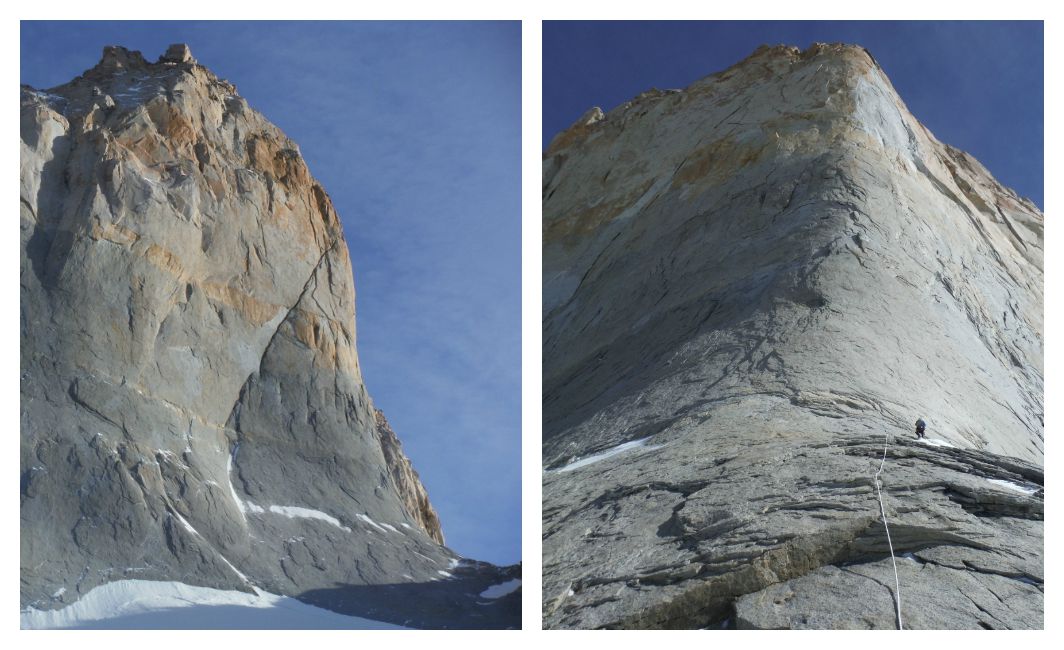Jerry Gore and the Wall of Paine
- Adventurers

As part of a new series of Adventure blogs, internationally acclaimed climber Jerry Gore (pictured right) has written a first-hand account of his First Ascent of The South-Eastern Face of the South Tower of Paine in Patagonia. Read on for a taste of what it's like to find yourself caught in a storm on a treacherous mountain face, all in the name of adventure...

"The glacial wind blew at me so hard my legs just buckled and I was blown to the ground. The blood from my cut cheek blew across the ice sheet like tiny balls of red mercury. Shit! No energy, no partner, and in the middle of a lost valley in Patagonia as I started to experience the effects of a diabetic coma. I had injected too much insulin that morning, and now I didn’t even have the strength to cry. My hand began to tremble- the first sign of hypothermia- as I tried to unfasten my rucksack. It wouldn’t budge. My mind started screaming inside my skull and I felt the panic starting to rise and engulf me like quicksand.
In October 2013 my international team- comprised of fellow British Climbers Mike ‘Twid’ Turner, Calum Muskett, and French cameraman Raphael Jochaud- managed to create a new climb and the first ascent of arguably the most inhospitable and technically difficult Big Wall in Patagonia. The SE Face of the South Tower (tallest of the 3 famous Towers of Paine) gets the full force of the legendary Patagonian winds. This amazing face, almost 1000m wide by 1300m high had no routes up it until our visit in October 2013. Our new route, “The Wall of Paine”, had been a tour de force of bravery, technical rock and ice and in many cases sheer stubborn doggedness. But it had come at a huge cost and the experience had pushed us all well beyond our own physical and mental limits.

Above: The 'Wall of Paine'.
It was a major effort just surviving, let alone actually climbing. Storms raged throughout the duration of the Expedition, and we only had a total of 2 days of perfect weather in 4 weeks. The 18 pitch climb was continuously difficult with many taxing A3+ pitches involving our full arsenal of pitons, skyhooks, wires and camming devices. For me, a Type 1 Diabetic, who needs to inject insulin as many as 8 times a day, the battle was multi-dimensional. The climbing was hard but it was the daily, hourly balance of walking a tightrope between too high and too low sugar levels that proved the hardest challenge to overcome.

Two weeks into our ordeal I was en route from our Advanced Base Camp to the start of the fixed ropes on our climb, early doors, when I started to feel my blood sugars drop. It was blowing around 120 KPH and the force of the fury coupled with my hypoglycaemic state reduced me to a lifeless rag doll. As I rolled around on the broken shards of granite I knew I had minutes to do something before I would become yet another Patagonian statistic.
Hypoglycaemia, also known as low blood sugar, is when blood sugar decreases to below normal. The only way out of it is to eat a large quantity of fast acting carbs such as honey, or energy gels. I always carry a good supply but it takes a minimum of around 10 minutes for your blood sugars to rise. In these conditions, with the wind-chill factor around -25C, I had seconds rather than minutes. With no shelter in sight lying next to a flat sheet ice glacier my options were limited to say the lease! What to do?
I grabbed and pulled and tore at my rucksack trapped underneath me. Inside lay my solution and I had already thought it through. Originally taken in case of extreme bivvies’ on the wall we had been using our Lifesystems Survival Bags as liners for our haul bags. As I crawled/collapsed inside mine, I cared little that the thing smelt of rancid onions and carrots that we had hauled up to ABC. This large orange dustbin liner proved to be literally a lifesaver!
As I chomped away on a series of cereal bars and gels inside my makeshift but effective shelter, I thought about how Mountain Legend Maurice Herzog had endured frostbite during the first ascent of Annapurna in 1950 due to the loss of his gloves, despite having a pair of socks in his rucksack. Luckily my usually rubbish memory had worked when it really mattered. But for me the learning point was very clear; when it all turns to custard NEVER PANIC! Just stay calm and focused and the solution will become clear."


- Jerry Gore
Authored 24.07.15



